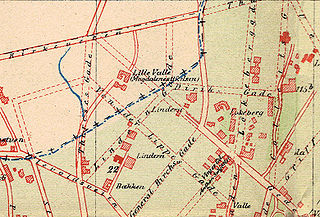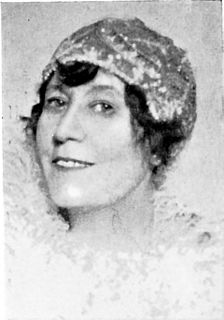
Pilestredet is a street in Oslo, Norway which begins in the city center and runs through the boroughs of St. Hanshaugen and Frogner.

Oslo is the capital and most populous city of Norway. It constitutes both a county and a municipality. Founded in the year 1040 as Ánslo, and established as a kaupstad or trading place in 1048 by Harald Hardrada, the city was elevated to a bishopric in 1070 and a capital under Haakon V of Norway around 1300. Personal unions with Denmark from 1397 to 1523 and again from 1536 to 1814 reduced its influence. After being destroyed by a fire in 1624, during the reign of King Christian IV, a new city was built closer to Akershus Fortress and named Christiania in the king's honour. It was established as a municipality (formannskapsdistrikt) on 1 January 1838. The city functioned as a co-official capital during the 1814 to 1905 Union between Sweden and Norway. In 1877, the city's name was respelled Kristiania in accordance with an offical spelling reform – a change that was taken over by the municipal authorities only in 1897. In 1925 the city, after incorporating the village retaining its former name, was renamed Oslo.

Norway, officially the Kingdom of Norway, is a Nordic country in Northern Europe whose territory comprises the western and northernmost portion of the Scandinavian Peninsula; the remote island of Jan Mayen and the archipelago of Svalbard are also part of the Kingdom of Norway. The Antarctic Peter I Island and the sub-Antarctic Bouvet Island are dependent territories and thus not considered part of the kingdom. Norway also lays claim to a section of Antarctica known as Queen Maud Land.

Sentrum, meaning city-centre, is located on the southeast side of the city near the inner Oslofjord.
The street was originally called Rakkerstrædet in reference to the city dump being located along the road at today's Pilestredet Park. It was renamed in 1820 to Pilestrædveien for all the willow trees along the road. [1] According to historian Alf Collett the renaming came about after pressure from the Brochmann family, who did not want to live on a road named after rubbish. [2] Rikshospitalet was located there earlier, now superseded by Pilestredet Park. Oslo Metropolitan University is found along the street, and the Ullevål Hageby tram line runs along parts of it. The Blitz movement is housed in Pilestredet 30. There are several churches along the street, including Fagerborg church.

Pilestredet Park is a neighborhood in the borough St. Hanshaugen in Oslo, Norway, about one kilometer north of the city center.

Alf Collett was a Norwegian writer and historian.

Oslo Metropolitan University is a state university in Oslo and Akershus in Norway. It has around 1,400 academic employees, around 20,000 students and around 800 administrative support staff.
Industry in the street includes Conrad Langaard [3] and St. Halvard Bryggeri. [4]
Nora Industrier was a Norwegian company, most of its history involved in manufacturing of soft drinks and foodstuffs.
The street is featured in the Norwegian version of the board game Monopoly, at the spot where North Carolina Avenue is found in the US version.

Monopoly is a board game that is currently published by Hasbro. In the game, players roll two six-sided dice to move around the game board, buying and trading properties, and developing them with houses and hotels. Players collect rent from their opponents, with the goal being to drive them into bankruptcy. Money can also be gained or lost through Chance and Community Chest cards, and tax squares; players can end up in jail, which they cannot move from until they have met one of several conditions. The game has numerous house rules, and hundreds of different editions exist, as well as many spin-offs and related media. Monopoly has become a part of international popular culture, having been licensed locally in more than 103 countries and printed in more than 37 languages.











